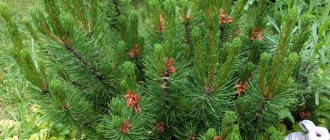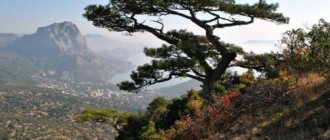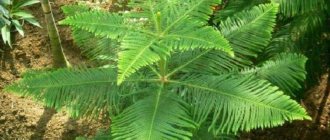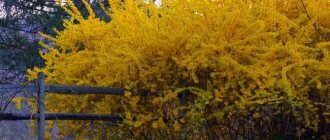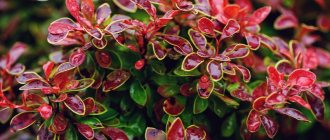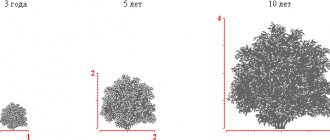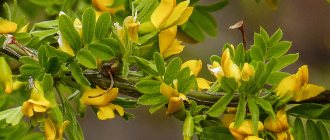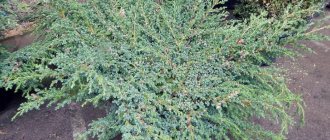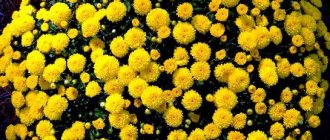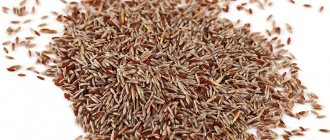Pine (Pinus) is a genus of evergreen coniferous plants, common in the Northern Hemisphere, mainly in the mountains and temperate zone. There are about 100 species, distributed in temperate forests and mountainous areas of the subtropical zone of the Northern Hemisphere.
For the most part, all species of the genus are light-loving, undemanding to soil and moisture, but very sensitive to smoke and gases; they do not tolerate urban conditions well. They live up to 300-500 years. They have a powerful, deep root system.
Scots pine is winter-hardy, drought-resistant, light-loving, has low requirements for soil and moisture, is not damaged by pests and diseases, tolerates soil compaction and air pollution, and is shade-tolerant. Does not suffer from snowfalls. It is used to create low-growing decorative groups, as protective plantings on steep rocky slopes and as a soil fixer. Goes well with spruce, larches, and birches.
Selection of planting material and time for transplantation
Gardeners recommend taking seedlings with closed roots from a nursery. The shoot must be at least 3 years old. Such a tree will 100% take root on a personal plot. Mountain pine, a low-growing plant with a beautiful crown, is popular. It is used in creating landscape design.
To save money, you can dig up a tree in a pine forest yourself. The main thing is to carefully remove the sprout from the ground, leaving a large lump of soil so as not to expose the roots. You cannot dig up a young seedling growing on a slope, the root system of which is exposed and the trunk is bent. The plant does not take root well and looks ugly.
The optimal season for replanting coniferous crops is autumn. This is usually September, when it is quite warm and humid. During this period, it is safe to remove the root system from soft soil. Sometimes seedlings are transplanted in April or May, depending on the weather. The main thing is that there are no frosts in the spring; fragile roots are afraid of low temperatures.
The tree is dug up carefully, gradually exposing and removing the roots from the soil. It is important not to cause damage to the root system. It is recommended to use young seedlings. They are easy to transport if the site is far from the forest.
Use in landscape design
Pines have long been used in ornamental gardening, where they are valued for their beautiful crown shape, the unique charm of their slender, bright trunks, and the variety of shapes and colors of their needles and cones. Usually they are used to create tracts in forest parks. Pines form the structural basis of the garden and serve as its skeletal plants. Some pines are valuable nut-bearing plants, producing edible, oil-rich seeds called nuts.
For information: Pine has antiseptic, anesthetic, expectorant, antimicrobial, diuretic, choleretic, and antiscorbutic effects.
You can order landscape design for your site in Minsk and the Minsk region here:
Material prepared by: horticulture specialist Buinovsky O.I.
Methods of propagating pine trees and finding a place to plant
Gardeners practice different methods of growing coniferous crops, which have their pros and cons. Popular:
- graft;
- seeds;
- cuttings.
Growing from seeds is a long and complex process that allows you to obtain strong planting material. Seeds from the cones are placed in a container with loose soil, sprinkled with peat, and left to germinate. A lot of planting material is obtained from cuttings from one tree. The plant retains the characteristics of its mother culture. But a small percentage of seedlings take root, which is why the method has not gained popularity.
The coniferous crop is grafted into the butt. The method is used to obtain new varieties. But grafting is carried out by experienced gardeners who understand the complex process. It is better for a beginning summer resident to grow crops from seeds or cuttings with his own hands.
Scots pine, unlike fruit trees, does not need fertile black soil or peat soil. The main requirement is high-quality drainage for the root system, provided by sandy soil. It is recommended to plant the crop on a slope in a prepared hole. If the area is flat and the soil is fertile, the plant is planted on the sunny side, after diluting the soil 1:1 with sand.
Where to plant a pine tree on the site
Pines are unpretentious trees that can grow on poor soils. The best soils for planting are sandy and sandy loam. On organically rich soil, peat bogs, and limestone, conifers, surprisingly, grow poorly. Mediterranean and American varieties thrive in rich soils, but their shoots do not have time to ripen, so there is a high probability of freezing without shelter. Alpine species prefer planting on alkaline soils with a high lime content.
Pine is a light-loving plant, for which any place is suitable, as long as it is located in a illuminated area. Then the tree grows spreading, with a dense crown. In the shade, the plant stretches upward, its lower branches dry out and die.
The best planting location is the south side of the house or garage.
Rules for replanting a seedling dug up in the forest
Experts recommend choosing low trees from 60 to 120 cm. It is better to dig up a seedling that is 3-5 years old. Older trees do not take root well. This also applies to seedlings that are too young. A straight pine tree with branches placed alternately is dug out with a bayonet shovel. Choose a crop with a beautiful crown. The trunk is dug in a circle at a distance of half a meter. It is important to remove the lump of soil along with the root system. On average, up to 20 kg of soil should remain on the roots.
Gardeners recommend transplanting young pine trees not into ordinary soil in the garden, but into soil taken from the forest. The substrate already contains all the substances necessary for the coniferous crop, providing optimal conditions for rooting. Additionally, mineral-based fertilizers purchased in the store are used. A hole for planting a tree is dug larger than the roots of the seedling.
Coniferous crop transplantation takes place in 4 stages:
- A place is chosen. It is advisable to plant the plant on a sandy slope. If there is black soil on a personal plot, it is diluted with sand to ensure high-quality drainage.
- The pit is being prepared. At the bottom of the pit, crushed stone is poured in a layer of 20 cm, humus and soil on top. Nitrogen fertilizers are added in an amount of 20 g. It is important that the roots do not reach the fertilizers and do not burn.
- A tree is being planted. The seedling is placed in a hole together with a lump of soil. Forest soil is enriched with a fungus - a symbiont. It supplies the root system with nutrients to accelerate growth.
- The seedling is watered. After planting, the pine tree is watered abundantly. For the first 2 days, a “swamp” is maintained around the trunk. During rooting, the plant is watered 2 times a week.
Planting a seedling
Important: do not deepen the neck of the root system. It is located at ground level. If you bury it, it rots and the seedling quickly dies. When replanting a plant together with a ball of earth, the neck automatically remains open.
Proper care after planting
First of all, we pay attention to pruning. It is not required, but if it is necessary to slow down the growth of the tree and leave it as it is, you need to break off the young branches by 1/3. This can be done every 2 years and the pine will become thick, beautiful and not too tall.
Water only at the rooting stage of the tree, and even then, not too often. 1-2 times a week for 15-20 minutes - no more needed. After rooting (a couple of months) there is no need to water. There will be enough precipitation for the tree to feel great.
Spruce seedlings and pine trees that were planted in the fall should be watered constantly, stopping only 2 weeks before the first frost.
You don’t need a lot of fertilizers, but they are necessary for normal growth and development of trees. About 40 g of nitrogen fertilizers, 15 g of diluted ammonia suspensions, 5 kg of humus for each tree - only then can you count on an excellent crown.
Regardless of where you plant the pine tree, it will have to be protected from frost for the first 2 years, especially if you replanted it in late autumn. Mature trees are resistant and can withstand -40 degrees, which plants under 4 years old cannot boast of. Wrap them in the same way as currants or other berries, cover them with spandex.
We looked at when it is better to plant pine trees and how to do it correctly. Now you can take a shovel and go into the forests in search of a suitable tree that you will look at for many years in your dacha!
Growing a tree from seeds
Planting pine trees at home with seedlings is much easier than growing a crop from seeds. But gardeners sometimes take seeds from a mature cone. This method ensures that the plant will take root. There are several tips to get the desired result:
- To speed up the process of seed germination, a sharp change in temperature is used. Seeds are placed in the refrigerator for 2 months. The prepared planting material is soaked in warm water +40 °C. The seeds are planted in boxes or flower pots.
- The containers provide high-quality air exchange. The container is placed on a sunny windowsill. It is covered with transparent plastic film until the first shoots appear. Afterwards the shoots are opened and kept warm.
- Seeds, unlike seedlings, are germinated in fertile black soil saturated with peat. Cedar pine is planted with peat tablets.
- The seeds are buried to a depth of 3 cm. If the distance is greater, the plant may not germinate.
- The seed is planted at a distance of at least 2-3 centimeters. This will make it possible in the future to plant germinated seedlings in a separate container without damaging the root system.
Growing from seeds
Nurseries grow pine from seeds. This method ensures the production of strong seedlings with almost 100% survival rate.
Pine planting dates
The ideal time for planting pine in the fall would be late September-early October, and in the spring - late April-early May. There is a technology for replanting in winter, but this requires special equipment.
In summer, during the period of active growth, such manipulations are not recommended due to the need for a large amount of water for the roots of the plant, as well as its still ongoing formation and lignification of shoots.
Planting a pine tree in the spring would be the best option, since in this case the plant will have time to take root and prepare for winter before the fall.
In autumn, all processes in trees slow down, and establishment is painless.
In winter, planting a pine tree is possible only if the seedling is further covered with spruce branches or special material.
How to care for a fragile plant?
A correctly transplanted coniferous seedling is half the battle. It is important for good growth to provide quality care. Favorable growing conditions are ensured as follows:
- When planting in the spring, after rooting, the plants are not watered. Enough natural precipitation. If a coniferous crop is replanted in the fall, it needs to be irrigated abundantly. Watering is stopped 10-15 days before the first frost.
- You can form a beautiful crown by balanced feeding of pine trees and minerals. Up to 40 g of nitrogen-based fertilizers and about 5 kg of manure are applied under the roots.
- For the first 2 years after transplantation, the young tree is covered before the onset of winter. It is especially important to cover seedlings that were planted in the fall and have not had time to fully take root. An adult crop can easily withstand frost below -40 °C.
- Often a young pine tree actively develops for the first 2 years, and then dies. This occurs when groundwater lies close to the surface. The overgrown root system reaches groundwater, causing it to rot.
Important: abundant watering is allowed only if good drainage is ensured. Otherwise, the root system will suffocate in water and the pine will die. Gardeners recommend watering frequently, but in small doses. Leave a distance of at least 200 cm between neighboring trees so that the roots do not intertwine.
Simple recommendations from experienced gardeners will help everyone grow a beautiful pine tree in their summer cottage, which will delight the eye for many years.
Which pine tree to plant on the site
You should not give up the idea of planting a pine tree in your country house or near your house because of the height it reaches in adulthood. There are low-growing varieties that have the same cleansing, bactericidal, medicinal properties as their tall relatives:
- The Scots pine variety Fastigiata has a pyramidal shape and reaches a maximum height of 15 meters. It is very compact and will easily fit into any garden, so it is ideal for planting in small areas;
- The Watereri variety has an ovoid-shaped crown, its height is on average 4 meters. The tree grows slowly, loves sunny areas, and tolerates wintering well;
- Mountain pine is a small branched bush, harmoniously combined in design with larches and birches. The plant is undemanding to soil, resistant to diseases and pests, and winters well after planting;
- The Compact variety is small, up to 5 meters, with a variety of ground cover dwarf forms creeping along the ground. The annual growth after planting is only 10 cm;
- Cedar dwarf - has widely spread branches. The maximum height of the plant is 4 m. The needles are very beautiful, collected in bunches of five pieces. Trees look more impressive in group plantings;
The listed varieties can successfully grow throughout the Russian Federation, easily tolerating heat, frost, snowfall, and drought. Pines in the Moscow region, Novosibirsk, Krasnodar look great and feel good.
Popular types and varieties of pine trees
There are many types and varieties of pine trees, but the most famous are:
- Ordinary (Pinus sylvestris);
- Balkan or Rumelian (Pinus peuce);
- Elf dwarf (Pinus pumila) or sometimes also called cedar dwarf;
- Black (Pinus nigra);
- Mountain (Pinus mugo).
Read more about planting and caring for mountain pine in a separate article .
Note! As a general rule, you are most likely to find Scots pine .
Botanical description and features
This coniferous tree has many varieties, ranging from Scots pine, which is familiar to residents of Russia, reaching a height of 40–50 m, to creeping varieties used to create landscape compositions. All these plants share common botanical properties - the presence of paired needles of a bluish or dense green hue and ovoid fruit-cones with seeds developing in them.
1 - general view of the tree, 2 - shortened shoot with two needles, 3 - branch with female and male strobili, 4 - female cone, consisting of macrostrobilae, at the time of flowering, 5 - macrostrobilus (a - seed scale with two ovules, b - covering and seed scales), 6 - branch with an overwintering cone (a) and a formed cone (b), 7 - opened mature cone, 8 - male spikelet consisting of macrostrobilae, 9,10 - microsporophyll, 11 - pollen, 12 - lignified seed and covering scales with a thickened apex - a scutellum (apophysis), 13 - lignified seed scales with 2 winged seeds, 14 - a seed with a wing.
The shape of the tree's crown depends on its variety, as well as its location. Thus, in dense coniferous forests, pine, as a rule , has a cone-shaped crown, while in spacious areas it looks more like a spreading umbrella. Pine needles, cones and wood contain essential oil, which is widely used in medicine.
- Medicines made from this substance are used for the following health problems:
- diseases of the respiratory system;
- diseases of the gastrointestinal tract;
- inflammation of the oral cavity;
- dermatological diseases;
- joint diseases.
Mistake 4: Ignoring the Individual Requirements of Conifers
In order for your coniferous pet to develop well in a new place, it is important not to ignore its species requirements, but to create optimal conditions for development.
You can find a large assortment of different types of conifers in our catalog, which combines offers from various gardening online stores. Select seedlings of coniferous plants.
Requirements of fir trees
- choice of landing site: shaded; exclude areas with close groundwater;
- soil for backfilling: turf, leaf soil, peat, sand (2:2:1:1);
- drainage is required: a layer of broken brick and sand 15-20 cm;
- planting depth 50-70 cm;
- prevent trampling and soil compaction, especially in tree trunk circles.
Ate along the wall
Cypress requirements
- choice of planting site: partial shade, variegated forms - in the sun;
- soil for backfilling: humus, leaf soil, peat, sand (3:2:1:2);
- drainage is required: a layer of broken brick and sand up to 20 cm;
- planting depth 70 cm, less often up to 1 m.
Lawson's cypress
Larch requirements
- choosing a landing site: open sunny places; for Japanese larch – partial shade;
- soil for backfilling: leaf soil, peat, sand (3:2:1);
- drainage only on heavy soils: a layer of broken bricks up to 20 cm;
- planting depth: 70-80 cm;
- plants are planted in a permanent place at the age of 4-5 years;
- planting time - before buds open;
- preservation of young thin roots with mycorrhiza.
Tender larch
Juniper requirements
- choosing a landing site: sunny places;
- soil for backfilling: peat, turf soil, sand (2:1:1); the ratio may vary depending on the species: for example, Siberian juniper prefers sandy soils, Cossack juniper grows well on calcareous soils, Virginia juniper - on clay soils;
- drainage is required: a layer of broken brick and sand 15-20 cm;
- planting depth 70 cm, with soil added to the hole.
Junipers
Fir requirements
- choosing a landing site: shady places;
- Seedlings take root better at the age of 5-10 years;
- soil for backfilling: clay, leaf soil or humus, peat, sand (2: 3: 1: 1);
- drainage is required on heavy soils: a layer of broken brick or crushed stone 20 cm;
- planting depth 50-60 cm; the root collar should remain at ground level.
Requirements of pine trees
- choosing a landing site: open places;
- Young seedlings up to 5 years old take root well;
- soil for backfilling: turf soil, sand or clay (2:1);
- drainage is required on heavy soils: a 20 cm layer of broken brick, gravel or sand;
- planting depth 0.8-1 m.
Young pines
Yew requirements
- choice of planting site: semi-shady, shady places;
- soil for backfilling: turf soil, peat, sand (3:2:2);
- drainage is required: a layer of broken brick and sand 20 cm;
- planting depth: 60-70 cm.
Planting a seedling
In the middle zone, planting is carried out in early autumn, in the southern regions - in late autumn. The recommendation is not taken as the ultimate truth. The dates are adjusted up or down taking into account the weather. The second criterion is the quality of the land. The worse the drainage, the sooner you need to plant. Gardeners adhere to the recommendations below:
- ½ bucket of water is poured into the prepared hole;
- carefully lower the seedling;
- if the dimensions of the roots with a lump of earth are larger or smaller than the diameter of the hole, then it is increased or decreased;
- the root collar cannot be buried - it is located strictly above ground level;
- as soon as the summer resident has completed planting a pine tree from the forest, he mulches the soil around the trunk;
- mulching is carried out using old pine needles;
- After planting the seedlings, they are watered with water.
Pine seedlings are watered only with a watering can. If you plan to plant several pine trees on the site, then you should pick up a measuring device. Botanists are unanimous that it is better to plant pine trees on your site at a distance of 3.5-4 m from each other.
When to plant pine trees, their types
It is better to plant young plants in the spring, when the soil thaws (from April to mid-May). You can plant pine trees in the fall (from mid-August to the end of September), when the daytime temperature does not exceed 10-12 degrees.
Note! In summer, seedlings actively grow and shoots form.
There are many types and varieties of this plant:
- Banksa is native to North America. Grows up to 6-10 meters. It has an irregular crown and a characteristic curved trunk.
- European pine is a small tree up to 3 m tall with a dense dense crown of a pyramidal shape.
- Korean pine lives 350-400 years, reaches a height of 50 m. It grows in the Primorsky and Khabarovsk territories, in the Amur region.
- Mountain has the shape of a bush. It is widespread in landscape design and has a huge number of decorative subspecies. Over the course of a year, the plant grows by about 6 cm. It tolerates heat and winter cold well.
Mature multi-meter trees are planted the other way around - in winter. But for this it is necessary to dig up a tree with a large volume of earth around the roots, which requires the use of special equipment.
Growing pine trees as a business
Growing pine trees for sale is considered a profitable business, characterized by minimal financial and labor costs. The first profit is possible within two years after planting. This business is suitable for both gardeners and businessmen. The work is simple, profitable, but seasonal. To begin with, you will need a plot of at least 2 hectares, fertile land and a greenhouse. The choice of varieties for planting is of great importance. They must meet the criteria:
- adaptation to local climate;
- disease resistance;
- unpretentiousness of content;
- rapid growth.
Both planting purchased seedlings and growing pine trees from seeds, with proper business organization, is a profitable business.
Selecting a location
A gardener who wants to properly plant a pine tree on a plot pays attention to the composition of the soil. It’s good if the sandy variety predominates. Other requirements are as follows:
- It is necessary to have drainage, otherwise the root system will dry out;
- 20 cm of crushed stone is poured at the planting site to ensure drainage;
- coniferous trees are planted only on a slope;
- 450-500 g of manure is poured into the bottom of the hole in which the seedlings will be placed;
- 5 cm of soil is placed on top of the manure.
On a note!
When planting, the gardener makes sure that the roots do not touch the manure - the soil layer acts as a safety cushion. Otherwise, spring rains will provoke an unwanted chemical reaction.
Pine diseases and pests
It is necessary to frequently inspect the pine tree for various damage to both bark and needles, for example, changes in their color; this may indicate the onset of some kind of disease.
Pine pests
Of the pine pests, the spruce-fir hermes is considered the most dangerous; its activity causes the needles to turn yellow. Colonies of this pest look like snow-white cotton wool that covers the needles. To overcome the pest, you need to treat the plant with insecticides at the first sign of its appearance.
The common spruce sawfly is a pest that happily eats needles. At the same time, the needles become red, as if they had been burned. If there is a lot of pest, then young shoots may be completely left without needles. To combat this pest, you can use Fufanon or other insecticides, strictly following the instructions for use.
The bark beetle is a small beetle, reaching a length of 0.5 cm. The beetle in the wood of Scots pine literally gnaws through passages and lays eggs in these passages, from which entire colonies of the same individuals subsequently appear. It’s scary to think, but bark beetles can completely destroy even an adult tree in 45-50 days. If you notice holes in Scots pine wood, then insecticides may not help; in addition to treating the surface of the wood with an insecticide, you also need to inject this drug into the holes. Treatment can be carried out weekly until the insects are completely exterminated.
Scots pine seedlings. © Sanja565658
Male cones on Scots pine. © Beentree
Cones on Scots pine. ©John Haslam
Pine diseases
Schütte vulgaris - this disease belongs to the category of fungal diseases. With it, brown spots initially form on the needles, so small that they are not immediately noticeable. Over time, the spots increase in size, grow, turn yellow, after which they acquire a brown color, and the needles at this stage of disease progression begin to fall off. Under the fallen needles on the branches of Scots pine you can see myceliums; they look like dark formations of various shapes. In order to overcome this disease, it is necessary to treat plants in the autumn with colloidal sulfur (a tablespoon per bucket of water, the norm for 2-3 plants) or 1% Bordeaux mixture.
And, of course, rust is the most common disease of Scots pine. With this disease, you can see orange spots and swellings on the shoots, which quickly spread throughout the entire plant and can spread to neighboring, still healthy pines. If the infection is already strong enough, then there is nothing left to do but cut off the affected branches and burn them, and if the entire plant is affected, then uproot it and also burn it. This way you will prevent further spread of the disease. Control measures include treatments with colloidal sulfur and Bordeaux mixture, as described above.
So, as you understand: Scots pine can become your reliable friend throughout your life, it will decorate the area and provide shade and fresh air, without saddening you with falling leaves and without forcing you to remove them. With proper care, pine will remain young and beautiful for centuries, and not only you, but also your children, grandchildren and great-grandchildren will enjoy it.
Care instructions
Coniferous trees do not need to be inspected regularly. They grow on their own, provided the gardener follows the rules of care. You need to monitor the health of young trees:
- Planting in late fall increases the risk of sunburn. The seedlings are insulated with film. If the planting of pine trees on your site has been shifted to spring, then they are covered with a protective coating from the sun's rays. Watering plays an important role.
- A moderate supply of moisture will help to grow powerful trees. The soil should be slightly moist and not swampy. The second rule is that fallen leaves and debris should not accumulate around the root circle. They are a source of disease. There are always pests in dirt.
You may be interested in:
How to properly plant fruit trees in the fall: planting dates Summer residents, when planting trees in the spring or autumn, pay attention to a number of related factors. Weather...Read more...
Pruning is a mandatory procedure. As soon as the needles are planted, the summer resident monitors the condition of the branches. They should not be dry or show signs of pathological changes. As soon as something like this makes itself known, they are cut off. You can't hesitate.
Pine is an evergreen tree that is planted on a personal plot. Seed material is taken from the nursery. There you can be sure of its quality. The second possible source is forest. An option for those who have sufficient experience. A gradual replanting of pine trees is carried out with soil around the rhizome, otherwise the risk of seedling death increases. The second rule is that you cannot take seedlings older than 3-5 years - a bad omen in all respects. The older the tree, the more painful it reacts to transplantation. If the gardener decides to replant the pine tree within the site, then the manipulation is carried out in early spring.
